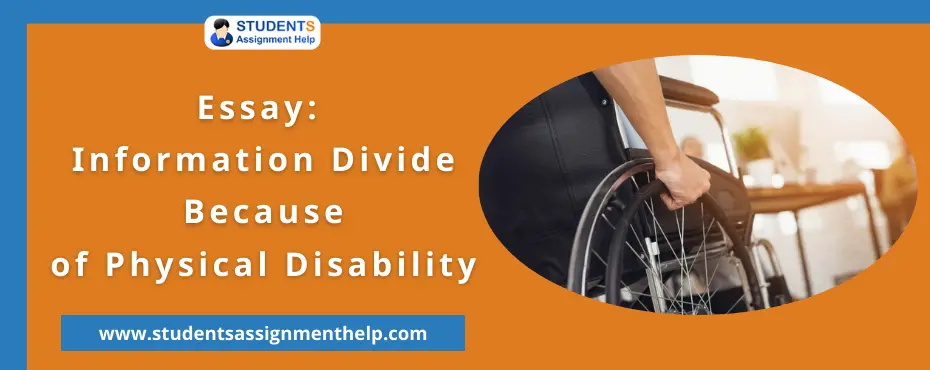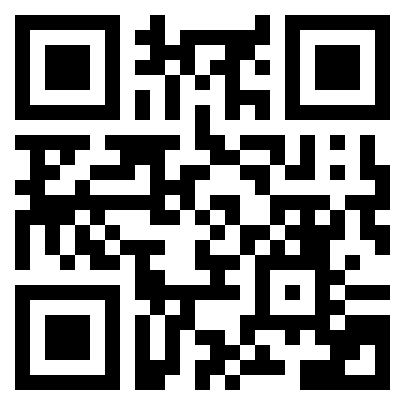Essay: Information Divide Because of Physical Disability

Introduction
The information divide can be considered as one of the prime issues faced by international society in the existing period of time. In general terms, the information divide can be considered as economic inequality among different groups and communities due to unequal access to information and knowledge. From the perspective of the long term sustainability of society, this information divide can be proved as one of the most critical problems as it creates knowledge inequality and gap within society. There is a number of different reasons behind the occurrence of information divides within society (Steyn and Johanson 2010). The difference in economic status among different communities, lack of proper access of information technological tools, physical disabilities of people and linguistic barriers can be proved some of the prime reasons behind the problem of the information divide within the society (Simpson 2009). In context to this, the presented essay is targeted to reflect that in the Australian context, physical disabilities and linguistic barriers can be considered as the most frequent reason behind the information divide within the region. In order to bridge this information divide, there is a need of undertaking some intensive amount of changes in existing education facilities available to disabled people so that they can be able to retrieve the adequate amount of information from various sources. In addition to this, there are different new technological changes including voice command processing machines, customization in designing and proper training especially for disabled people can be considered as the prime solution to the problem of the digital divide in the existing period of time.
Thesis statement:
Whether physical disability can be considered as a prime cause of the information divide prevailing within Australian society.
Information Divide Because of Physical Disability
Information divide phenomena demonstrate that there is a gap that exists between those who have effective access to different types of information technology-related equipment and procedures, and those who do not have access to such facilities (Collins 2011). There may be several reasons behind the existence of the information divide and its related problems within society. in direction to this, it is seen in the context of Australian society it can be seen that physical disabilities of a person are also one of the most crucial reasons due to this comprehensive and equal access of information and its related technologies across the society. In the year 2012, only 62% of reported disabled people were online and having information access, while in the case of non-physical disabled people this figure was about 79% (O’Leary 2012). This data showing that physically disabled people face problems in accessing different crucial sources related to information technology.
There are several critical reasons that underpin the limited access to information and communication-related technologies (ICTs) by physically disabled people. Some of the crucial reasons are listed below:
- Limited access to ICT equipment due to physical disabilities and impairment
- Lower-income level
- Limited amount of training of using different technological types of equipment and tools for communication and information exchange availed by physically disabled people
- Physically disabled people generally pursue less developed linguistic skills, which becomes a barrier in the way of having effective and personalized access to means of information exchange.
- Lack of adequate availability of properly customized ICT equipment for physically challenged people due to which, access to such equipment becomes quite restricted for them (Atikinson, Black and Curts 2008).
Lack of proficiency in the English language can be considered as the prime problem in using different tools related to ICT. In the case of physically disabled people in a non-native English speaking country, i.e. Australia, the level of English understanding is quite limited, which is the prime reason their limited amount of ICT proficiency. In this way, physical disabilities sometimes convert into literary disability, which can create information divide within society in the most effective manner (Simpson 2009).
In the specific context of Australian society, there are four prime areas of communication technology in which, a clear information divide between physically disabled and non-disabled people can be seen in the most effective and efficient manner. These areas are Telephony, Television, the Internet, and any other technological device or equipment installed within public and private settings for the purpose of ensuring the proper exchange and access of information. These all the crucial sources are the prime measures with the help of which an individual can easily acquire information and have effective communication (Borowski, Encel and Ozanne 2007). However, for physically disabled people, it is not an easy task to use such tools of ICT in the most proficient manner. They have to face various problems in using these tools effectively. For instance, different problems, such as intellectual in-competencies, Visual disability, hearing problem, depended on access of information in the case of emergency, and problems in approaching to the desired ICT tools and technologies such as faxes, ATMs, info kiosks, computers, voting machines, and other types of electronic appliances which are generally used for the purpose of retrieving information, are generally faced by physically disabled people. In addition to this, multilayered disability, i.e. physical disability with a lack of effective literacy skills can be proved quite critical issues in dealing with the problem of the digital divide within the society (Australian Human Rights Commission 2000). It is due to the reason that the development of English language proficiency in the person facing physical disability requires some intensive amount of expert skill and equipment, which cannot be arranged easily.
In this way, it can be seen that there are different crucial issues that are generally faced by physically disabled people to have effective access to information technology-related tools and technologies, which have created an information divide in society. However, since disabled people are also one of the important parts of society, it is not feasible to make them separate from the mainstream of society. For this purpose, it is quite essential for the government and other societal institutions to bridge the gap due to the information divide phenomenon prevailing within the society. In regard to this, in the recent period of time, the government of Australia has started to show its intentions towards ensuring the effective and efficient access of ICT tools to physically challenged people also (Collins 2011).
In this context, the government has focused on providing more effective and advanced technologies for making the disabled people skilled enough to use advanced tools of ICT. In this context, the government has started to upgrade the information communication systems such as faxes, telephones, and ATMs installed for public utilities. For the purpose of enabling visually impaired people to get information, the government has started to provide information in various forms such as Braille language, audio or large print form (Soar, Swindell and Tsang 2010). In addition to this, for helping out the non-English speaking and literary disabled people, the government has started to use web-based technologies, such as the “Babelfish, which is efficient translation software, in public utility information and communication tools. For the purpose of enhancing access to information for people with hearing or speech impairments, the government has promoted written communication through the internet and other new technologies. For this purpose, some special attention is given over the training of physically disabled people regarding the usage of such new and innovative tools of ICT (Malcolm 2008).
These all the efforts employed by the government is showing the criticality of the information divide and the significance of bridging this information divide in the favor of long term sustainability of the society.
Conclusion
On the basis of the arguments made in the presented discussion, it can be indicated that physical disability is one of the core factors that lead to enhancing the information divide within the society. It is due to the reason that due to certain physical limitations and constraints, it is not possible for such physically disabled people to have efficient access to new and innovative tools related to information exchange and communication. Owing to this reason, it becomes essential for the local government to have proper considerations and attention over enhancing access of Information by physically disabled people through customized and highly innovative technologies.
References
Atkinson, J., Black, R. and Curts, A. 2008. Exploration of Digital Divide in an Australian Regional City: A case study of Albury. Australian Geographer 39 (4), pp 479-493.
Australian Human Rights Commission. 2000. Accessibility of electronic commerce and new service and information technologies for older Australians and people with a disability. [Online].
Borowski, A., Engel, S., and Ozanne, E. 2007. Longevity and Social Change in Australia. UNSW Press.
Collins, M. 2011. People with Disabilities Face Digital Divide. [Online].
Malcolm, J. 2008. Multi-Stakeholder Governance and the Internet Governance Forum. Consumers International.
O’Leary, T. 2012. Making connections to end the digital divide. [Online]. Available at: http://www.smh.com.au/federal-politics/making-connections-to-end-digital-divide-20121009-27aul.html [Accessed on 26th January 2014].
Simpson, J. 2009. Inclusive Information and Communication Technologies for People with Disabilities. Disability Studies Quarterly 29 (1), pp 56-64.
Soar, J., Swindell, R. and Tsang, P. 2010. Intelligent Technologies for Bridging the Grey Digital Divide. Idea Group Inc (IGI).
Steyn, J., and Johanson, G. 2010. ICTs and Sustainable Solutions for the Digital Divide: Theory and Perspectives. Idea Group Inc (IGI).

